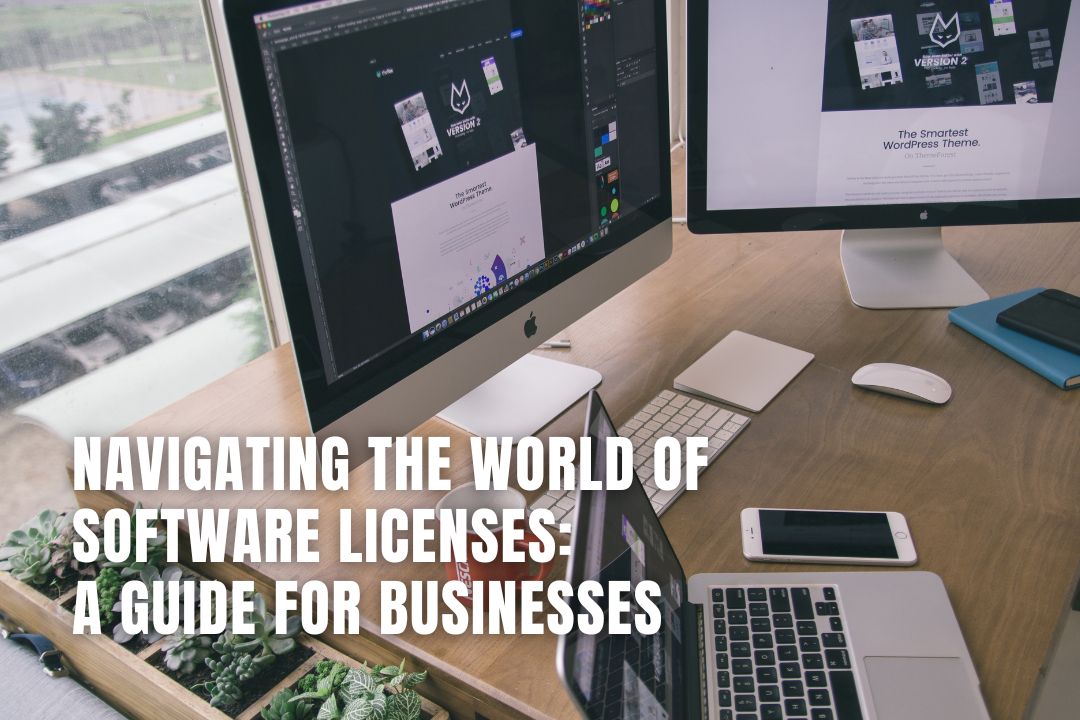
In the digital landscape of modern commerce, software not only enhances operational efficiency but also serves as a fundamental driver of business capabilities. Understanding and managing software licenses is therefore crucial, not just for legal compliance but to optimize both financial expenditure and technological utility. This comprehensive guide explores the complex world of software licenses, providing key insights to help businesses navigate, select, and manage these crucial assets effectively.
Software licensing is the means through which software developers control the distribution and use of their products. By understanding the various types of licenses, businesses can choose software that aligns with their operational needs and compliance requirements.
Selecting the right type of software license is critical for ensuring that business operations run smoothly without incurring unnecessary legal risks.
Effective software license management involves understanding the total cost of ownership and ensuring compliance with legal terms to avoid penalties. Businesses should regularly audit their software use and license agreements to ensure they are in compliance and assess whether the software still meets their needs.
When integrating new software, consider how well it will work with existing systems. Scalability is crucial as well; the software should support your business as it grows. Providers who offer scalable licensing options can provide more value in the long run.
Effective management of software licenses can help businesses avoid legal issues and make the most of their software investments.
Establish a clear policy for purchasing and managing software licenses, detailing:
Consider utilizing dedicated license management software to keep track of license statuses, expiration dates, and compliance. These tools can automatically alert you to renewals, potential compliance issues, and unused software licenses that could be eliminated to reduce costs.
As technology evolves, so too does the landscape of software licensing. Future-proofing your software licensing strategy is essential to maintain flexibility, ensure continuous compliance, and optimize investment in technology. Here are some key considerations to help your business stay ahead in the ever-changing software environment:
The terms of software licensing can change as new versions and updates of the software are released. It's vital to regularly review your licensing agreements to ensure they still meet your business needs and adjust them as necessary. This proactive approach can help you adapt to new business challenges and opportunities without facing compliance issues.
SaaS models are increasingly popular due to their scalability, ease of updates, and lower upfront costs. Transitioning to SaaS where appropriate can simplify software management, provide flexibility in usage, and reduce the burden of managing physical servers or complex software installations.
As software licenses evolve, it's important that all relevant staff are trained on the changes. This includes understanding new features, rights, limitations, and the impact these may have on their daily work. Continuous education ensures that your team not only remains compliant but also leverages software capabilities effectively.
Stay informed about trends in software development and licensing to anticipate shifts that could impact your business. This might include developments in artificial intelligence, cloud computing, or new regulatory requirements affecting data privacy. By staying ahead of trends, you can ensure your licensing strategy supports not just current but future business models and technologies.
Maintaining strong relationships with software vendors can provide significant advantages, including better support and access to insights about upcoming features or licensing models. Regular communication with vendors can help ensure that your software licenses are aligned with both vendor offerings and your business needs.
By integrating these practices into your software licensing strategy, you can safeguard your business against future challenges and capitalize on new technologies as they arise. This forward-thinking approach will support sustained growth and ensure your software infrastructure remains robust and compliant.
Navigating software licenses requires a strategic approach tailored to your business’s specific needs. By understanding the types of licenses available and implementing robust management practices, businesses can ensure they are making informed decisions that align with their operational objectives and legal obligations. The right software licenses not only protect against compliance risks but also serve as a strategic asset that can drive business growth and innovation.